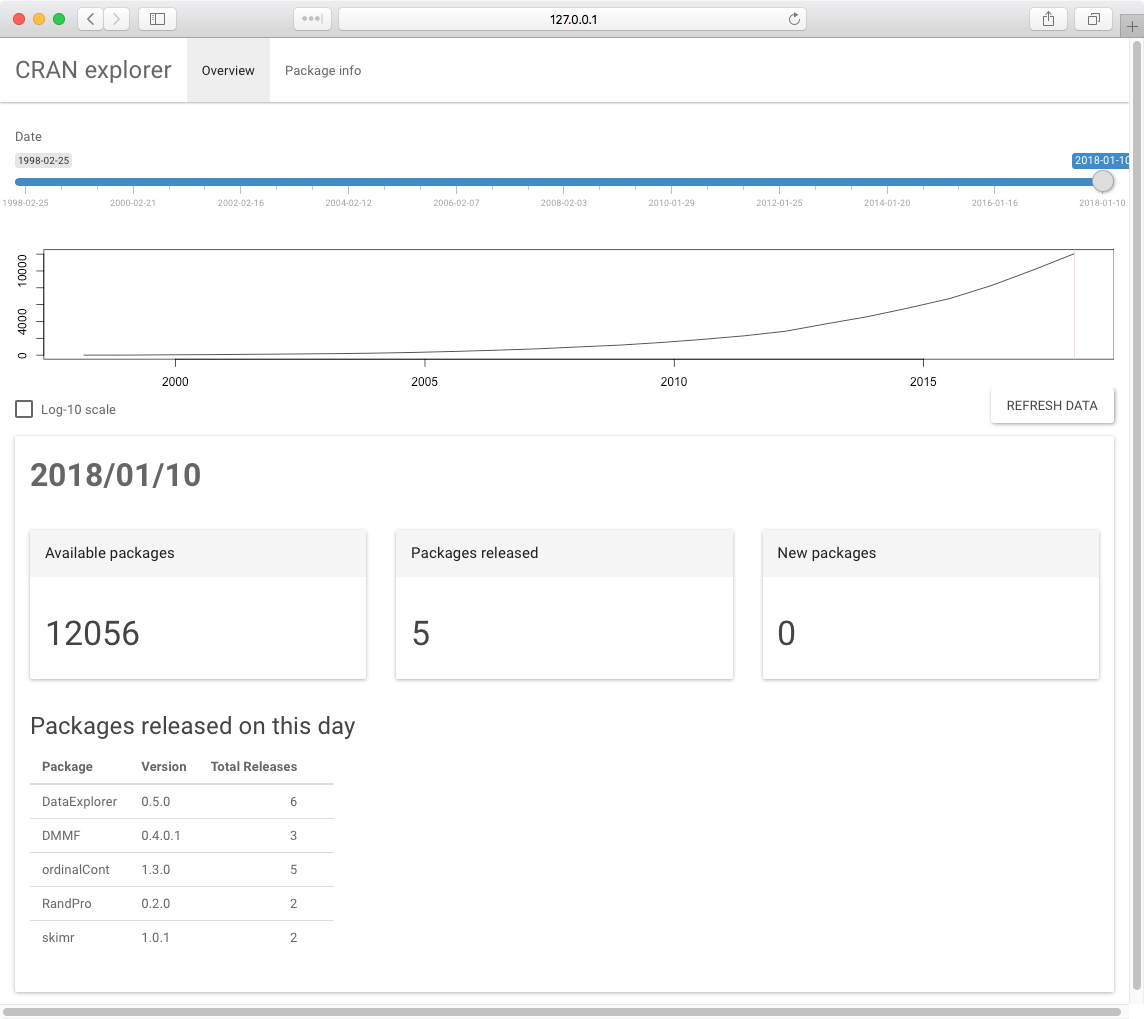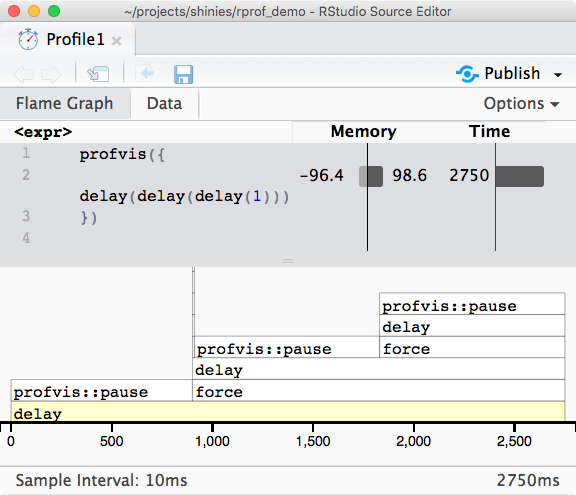Make Shiny Fast
…by doing as little work as possible
February 2, 2018
Agenda
- Introduce methodology
- Learn to measure, analyze with
Rprof&profvis - CRAN Explorer optimization tour
Optimization Loop Method
Benchmark
What’s in a benchmark?
- Model: Representative user actions
- Metrics: Latencies experienced by model user
Model example
Reserving flights
😱
Results took > 20 seconds!
It’s OK.
- Users expect to wait, UI confirms expectation
- It’s Fast Enough™
Benchmarking in practice
Best done casually!
- Fast Enough is easy to see
- Only when it’s not Fast Enough must we Analyze
Analyze
Analysis
- Exercise model to produce metric data
- Identify the one slowest thing
Optimizing slowest thing gives highest payoff
Rprof and profvis
- “Feels slow” usually means R is busy
Rprof: sample what R is doing- Computing (
ggplot2,dplyr) - Waiting (database, network, disk)
- Computing (
profvis: visualizeRprofoutput
The call stack
Traceback
Call stack over time
🤔
profvis in action
Short profvis Demo
example_apps/profvis_demo
In Practice
CRAN explorer

Optimizing CRAN explorer
- https://github.com/wch/shiny_demo/
- Built by Winston Chang
- My account of optimization work by Winston and Joe Cheng
Organization
cran_explorer/
├── app.R
├── deps.csv
├── packages.csv
├── plot_cache.R
└── utils.Rapp.R: Shiny appdeps.csv,packages.csv: dataplot_cache.R: Disk-based plot cacheutils.R: Download, prepare.csvfiles
Architecture
utils.Rfor downloading.csvfiles- Data loaded as global
reactiveVals onapp.Rstartup dplyrused to search, filterggplot2used for plots
Optimization #1: Pre-process
- Didn’t download from METACRAN every time
- Winston’s experience saved time
- Rule of thumb: if the data is big, pre-process
Optimization #2: Beware dplyr::group_by()
group_by()takes an existing tbl and converts it into a grouped tbl where operations are performed “by group”.
group_by() example
filter() after group_by() Slowdown
- First
filterapplied only tomtcars - Second
filterapplied to each group
Offending reactive
Optimization #3: CSVs read faster than RDS
| expr | mean |
|---|---|
read_csv("packages.csv") |
661.4826 |
readRDS("packages.rds") |
851.1554 |
Sidenote: scopes
- R process-global (top-level)
- Per-session (inside
serverfunction)
Optimization #4: Plot caching

plotCache: read-through cache for plots- Coming soon to Shiny
